Hot beverage sales are on the up for Susan Connolly, business development manager for her family’s four Spar stores in Wiltshire (two in Tidworth, one in Ludgershall and one in Pewsey). “I’ve just looked at the sales figures and across the whole hot beverages category sales are up 10%, which is good, but within that tea sales are down by about 15%, while coffee is up 9%.”
Susan has also seen an upturn in hot chocolate sales. “People buy the hot chocolate and serve it with whipped cream and marshmallows as a family treat, but sales are seasonal.”
Don’t forget the decaf tea
On average, more than two million individuals drink decaf tea every week (Kantar).
Alice Small, brand manager for PG Tips at Unilever, says PG Tips Decaf tea meets this consumer need and continues to show strong volume and value growth, performing ahead of the category with value growth of 9.64% in the past 12 months versus a flat decaffeinated tea market (IRI data).
PG Tips Decaf tea packs boast the Good Housekeeping Reader Recommended stamp of approval, following a survey which revealed that 86% of Good Housekeeping readers would recommend the product to a friend.
As for which brands sell, just like other categories within a typical c-store, hot beverages seem driven by promotions.
“There are no loyal PG Tips drinkers any more,” says Susan. “People just buy whatever is on offer and we’ve always got one brand or another on promotion.”
David Smith from Smiths Corner Stores in Louth, Lincolnshire, agrees with Susan about the lack of brand loyalty. “My customers are not particularly loyal, although you’ll always get the customer who prefers pyramid tea bags to round ones,” he says.
David is not a big fan of pricemarked packs. “I avoid them if possible because I believe it’s the retailer not the manufacturer who knows their business, but we do carry extra-value packs such as ‘120 bags for the price of 80’ or 50%-extra free because it’s all about perceived value.”
Susan’s stores stock tea bags in boxes of 40s to 160s, but she says the 160s are typically 80+80 free.
“When the bigger packs are on offer they are cheaper than the smaller packs so I can see the smaller pack sizes fizzling out. For instance, we currently have PG Tips 80s on offer at £2, but a smaller box is £2.29 so it’s cheaper to buy the bigger box even if you don’t want that many bags.
“There’s the perceived value for the consumer, but not necessarily for us,” says Susan about promotions in general, but she adds that they can sometimes increase incremental sales. “If a customer has come in for something other than coffee but sees it on offer they might pick it up, so that’s a sale we wouldn’t have got otherwise.”
The real thing makes a comeback
Paul Hargreaves, managing director of fine food wholesaler Cotswold Fayre, reports huge growth in popularity of real tea leaf - both in pyramid bag and loose leaf tea format.
“The UK market for speciality leaf tea has grown significantly in the past two years as consumers look for better quality products. The development of the large leaf pyramid teabag has revolutionised the way leaf tea is consumed,” he explains.
“These new tea bags offer the convenience of a normal tea bag, with the brewing ability of a teapot.”
Cotswold Fayre stocks a number of leaf tea products including ranges from Williamson’s Tea and Brew Tea Company.
Phil Kirby, co-founder of Brew Tea Company, believes that consumers are also turning to leaf teas because of their proven provenance: “Traditional tea bag brands are extremely commoditised and do not offer the story that other categories are benefiting from,” he says.
“With leaf tea, consumers can learn about the whole supply chain, from origins and leaf grades to the farming process.”
In her family’s biggest store, coffee gets a whole metre of space comprising six shelves, as does tea, but in the other three stores it’s 1m of six shelves for all hot beverages.
As well as standard tea, they stock Earl Grey, Lady Grey, breakfast, camomile and a couple of fruit teas, most of which are Twinings.
David stocks fruit, camomile and green tea: “We stock them because customers asked for them, but they don’t earn their space,” he says.
Tom Hazelden, Partners for Growth controller and convenience manager at Unilever UK, says tea tastes have evolved in recent years, with many people introducing fruit and herbal, speciality or green tea into their repertoire. “A successful tea fixture should reflect these changes, with the best-selling lines faced proportional to store size and location.”
His colleague, tea category director Faye Newman, adds: “There is a big opportunity for retailers to offer a range tailored to suit their location and shopper profile. In affluent areas, look to offer more choice, with two or three more lines of fruit and herbal or green teas. In less affluent areas, focus more on the core best-selling normal teas.”
Many retailers are already doing this. Susan says: “One of our stores is in a really rural area with a lot of agricultural workers and older customers and we sell PG Tips loose there.”
Calum Duncan of Kincraig Stores in Aviemore describes his typical customer as ‘elderly and rich’, which probably explains why in tea his best-seller is Clipper Everyday Fairtrade, which he sells at £2.79 for 80 bags.
Calum’s discerning customers might like to try Tetley’s latest launch. Aimed at high-end shoppers, the new Blend Collection comprises Tetley Extra Strong for those who like a stronger cuppa; Blend of Both which brings together the goodness of green tea with the taste of black tea, all in one bag; and Tetley Kenyan Gold (previously called Estate Selection).
Andrew Pearl, director of customer and shopper marketing for Tata Global Beverages, says: “The Blend Collection has great potential for sales. Tea is a great value beverage and at about 2p a cup it remains the cheapest beverage aside from tap water, but shoppers can take a real step upin quality and gain a different taste experience by just adding about 2-3p per cup.”
Rise of the machines
Figures from last summer, courtesy of Kantar, reveal that 10% of households in the UK owned a coffee pod machine, but you can bet that figure was boosted when people unwrapped their presents at Christmas.
Manufacturers are confident about this and investing heavily in these coffee delivery systems. Late last year Mondelez announced a $50m injection into its Banbury coffee plant, which it said highlighted the success of its Tassimo single-serve beverage system.
A wide range of branded drinks is available for the Tassimo machine, including Carte Noire, Costa and Cadbury-branded drinks.
Meanwhile, Nestlé recently added Krups Oblo and Delonghi Jovia machines to its Nescafé Dulce Gusto ranges.
According to IRI data, coffee pods account for 10.2% of total ground coffee cups, but 33.1% of value, worth £82m.
Calum’s customers have a taste for premium coffees, too. “Ground coffee is most popular - Traidcraft and Taylors of Harrogate, both of which sell at a standard price of £3.99,” he says. Other brands on his half-metre hot beverages display include Kenco, Nescafé, Tetley and Twinings - usually in pricemarked packs.
“Yorkshire Tea sells here even though we are in Lincolnshire and not in Yorkshire,” jokes David.
“With coffee we sell mostly instant in jars, but we do sell the Nescafé single-stick packs of cappuccino and latte. Also, if they’re on offer, we’ll carry those single-sachet one-cup jobs. And we stock a Fairtrade and roasted coffee.”
The coffee sachets David is talking about will include Nescafé Original ‘In 1’, which offers white coffee in single-portion sachets, packed five to a box. Nestlé says sales have grown since the product has been available in a £1 pricemarked box. The company says ‘In 1’ not only drives a higher pence per cup for everyday coffee, its sales are incremental to core coffee lines.
Meanwhile, Susan’s biggest seller in coffee is instant granules. “Nescafé is our best-seller. We also stock Alta Rica and Colombia, and Douwe Egberts when it’s on offer.”
Douwe Egberts might not be a huge seller for Susan, but Rob Sergeant, business unit manager impulse at the firm, reports that Douwe Egberts Pure Gold 95g is the fastest-growing SKU in impulse with sales up 64%, making it worth £1.3m (Nielsen).
Understanding the coffee category
Rob Sergeant, business unit manager impulse at Douwe Egberts, says coffee in independents is broken into two main areas: instants (92% value share (Nielsen data); and ground (8%). “The UK is very much an instants-driven market, in which there are four main segments: freeze-dried; granules; speciality/sachets; and wholebean instant,” he says.
“It is crucial to understand that the key segments are the ‘traditional instants’ (freeze-dried and granules) as they account for 86% of your entire coffee category. By having the traditional instant ‘must stocks’ easily available to your shoppers ensures the fixture is working to meet shopper demand.”
He says the traditional instant granules must stocks are: Nescafé Original 100g; Nescafé Original 50g; Douwe Egberts Classic Roast 100g; and private label 100g. In freeze-dried they are: Nescafé Gold Blend 100g; Douwe Egberts Pure Gold 95g; Douwe Egberts Pure Indulgence 95g; Kenco Smooth 100g; Kenco Rich 100g; Kenco Decaff 100g; and Carte Noire 100g.
Sergeant says that once you have the traditional instants right, you should consider ground coffee and speciality, which make up 13% of your overall coffee sales.
“Ensure you have a range to cater for this demand. Wholebean instants (primarily Nescafé Azera and Kenco Millicano), comprise only 0.4% of independent coffee sales, but should also be considered for some space, as this is a new and innovative segment to the category.
With coffee shops on every high street and most places in between, much has been made of our coffee culture and consumers’ keenness to replicate coffee-shop style coffees at home. But Susan says her customers tend to buy the more upmarket coffee only on offer.
“Our Pewsey store stocks coffee for cafetieres, and we started selling the pods for Tassimo. The local Co-op had stopped stocking them so we thought we’d give them a try. I didn’t think they’d sell, but they are going really well.”
As for malted drinks, Susan says sales are seasonal and quite slow. Horlicks and Ovaltine tick along, but are generally sold to older people. David still stocks Horlicks, but says he doesn’t sell much of it. “And we have hot chocolate and cocoa powder - they’re not particularly strong sellers; they sell more in winter.”
Calum doesn’t offer any malted drinks, but does have hot chocolate - Aero and Cadbury.
When asked what manufacturers could do to help sales, David points out that manufacturers have done a lot of work on the hot bevs market “but it’s aimed at younger consumers when the majority of people who make hot drinks at home are older and very traditional. They like their instant coffee, while youngsters follow fads more and prefer their coffee to go.”
Age is undoubtedly a concern for the hot beverages category - while older consumers love their regular cuppas, many younger ones have never got into that daily habit. Susan says: “I was reading an article the other day that said coffee and tea are generally in decline as people go for healthier choices such as water; even in tea they are opting for fruit teas.”
Tata’s Pearl says the focus on healthy living continues to be one of the most important factors influencing tea consumption and this is benefiting the healthier segments such as green and redbush. “Value sales of green teas have increased 33.8% in convenience and 6.8% in total impulse, while fruit and herbal have increased 27.9% in convenience and 2.3% in total impulse (Nielsen).”
For retailers looking to reinvigorate hot beverage sales, cross-category merchandising could be useful.
Susan Nash, trade communications manager at Mondelez International, says: “Stores can inspire customers by grouping certain products together where possible, helping to drive impulse purchases and increase spend by making the most of the top-up customer mission - for example, siting hot beverages next to Cadbury Dairy Milk chocolate for an afternoon pick-me-up, or next to Belvita Breakfast biscuits for breakfast on the go.”
Taylors of Harrogate convenience channel controller John Sutcliffe urges retailers to consider POS on the hot bevs fixture and at other category fixtures. “For example, at the tea fixture display POS stating ‘Don’t forget your milk’ and vice versa in the chilled cabinet. This will disrupt the shopper from their routine mission and help drive extra penetration in store.”
Pearl adds: “We are working with customers across all channels to review how best to increase tea sales. In simple terms it is about understanding what your customers want and having the right range of teas from the right companies to meet these needs.”
Taylors of Harrogate is another company that is working closely with retailers. Convenience channel controller John Sutcliffe says: “In the past two years we have worked with symbol retailers and wholesalers to look at improving merchandising and how retailers shop in the cash and carry. In 2015 we will continue this and look to do some more expansive research regarding the purchase decision hierarchy in the convenience channel.”
Recent activity includes sampling in cash and carries via the Yorkshire tea van Little Urn. “We handed out free tea to customers as they entered the depot and money-off vouchers at the fixture for Yorkshire Tea,” explains Sutcliffe.
For Susan, in-store tastings work in other categories so that’s perhaps something she could try on hot beverages. “If a supplier wants to organise a tasting in one of our stores I’d be happy to give it a try.”
IN BRIEF
A Yorkshire brew
While sales of standard black tea are generally in the doldrums, Yorkshire Tea is enjoying sales growth of 5% year on year, according to Kantar data. The brand is pitched as ‘a proper brew that makes a proper difference’.
Tetley invests in marketing
Tata says its £5.8m programme of activity for Tetley will position it as the top investor in brand marketing of all the tea brands. A new ad featuring the Tetley Tea Folk is currently on air. Other support will come from TV sponsorship of Channel 5’s family movie slot, sampling events and social media activity.
Horlicks aims for a new audience
GlaxoSmithKline is working to make Horlicks relevant to today’s consumers. To entice new users and drive trial, it has made the hot milky drink available in sachets and added pricemarked packs to indicate value. It has also created a 200g size for ‘smaller and lighter’ shopping trips.
Douwe Egberts extends range
Douwe Egberts’ latest line is Classic Roast in 100g and 200g jars. It is described as a medium roast coffee that’s easy to drink. The brand will also be backed by a £5m investment in 2015 which will cover TV, press and POS material promoting pricemarked packs.
PG Tips gets charity makeover
Limited-edition packs of PG Tips have been created to raise £1m in aid of Red Nose Day. Unilever will donate 8p from every promotional pack sold before March, and the activity will be supported by digital and TV advertising set to begin in February.
A taste of Dorset
Keith Spicer Ltd has added eight fruit and herbal flavours to its Dorset Tea brand. The new-look range taps into the growing trend for fruit, herbal and green teas, and positions the brand as offering ‘A Taste of Dorset’. The teas retail at £2.25 for 20 sachets. A marketing campaign entitled ‘Discover the Taste of Dorset’ will support the launch.
Source
Tracy West




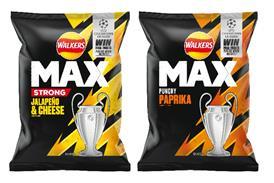
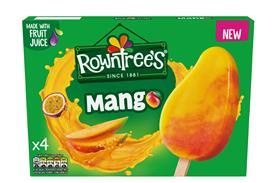


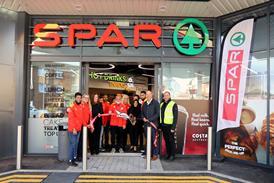
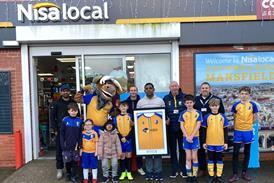






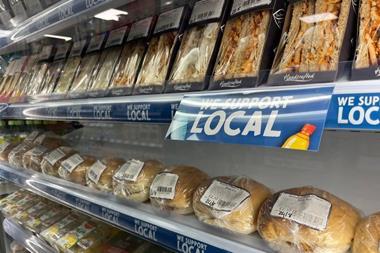
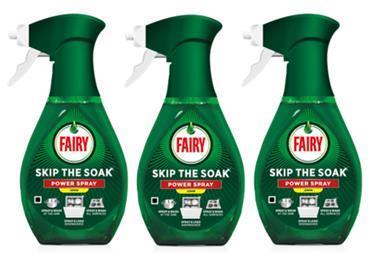
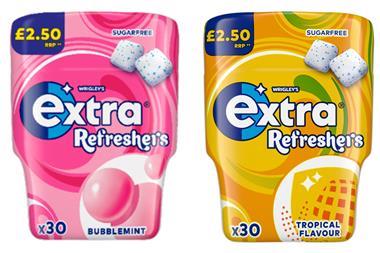
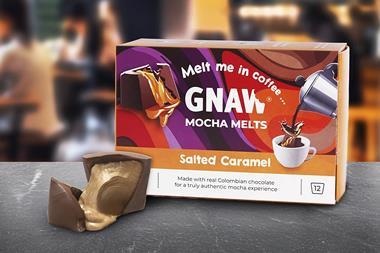

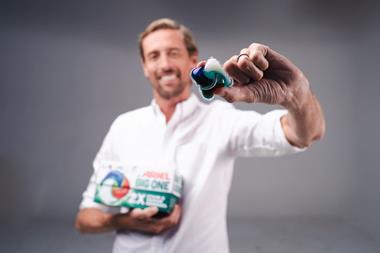
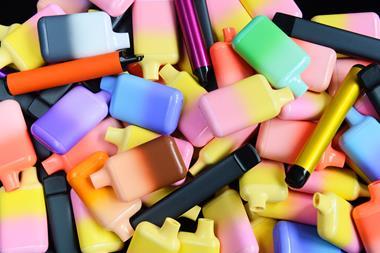





No comments yet